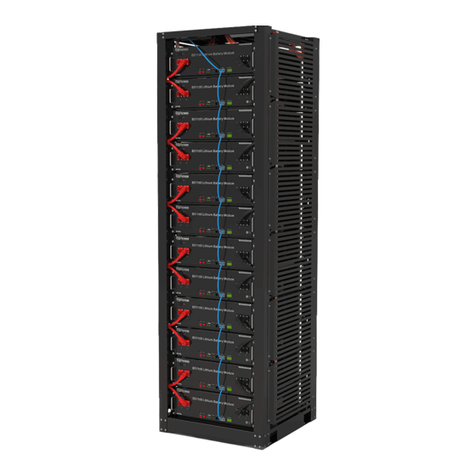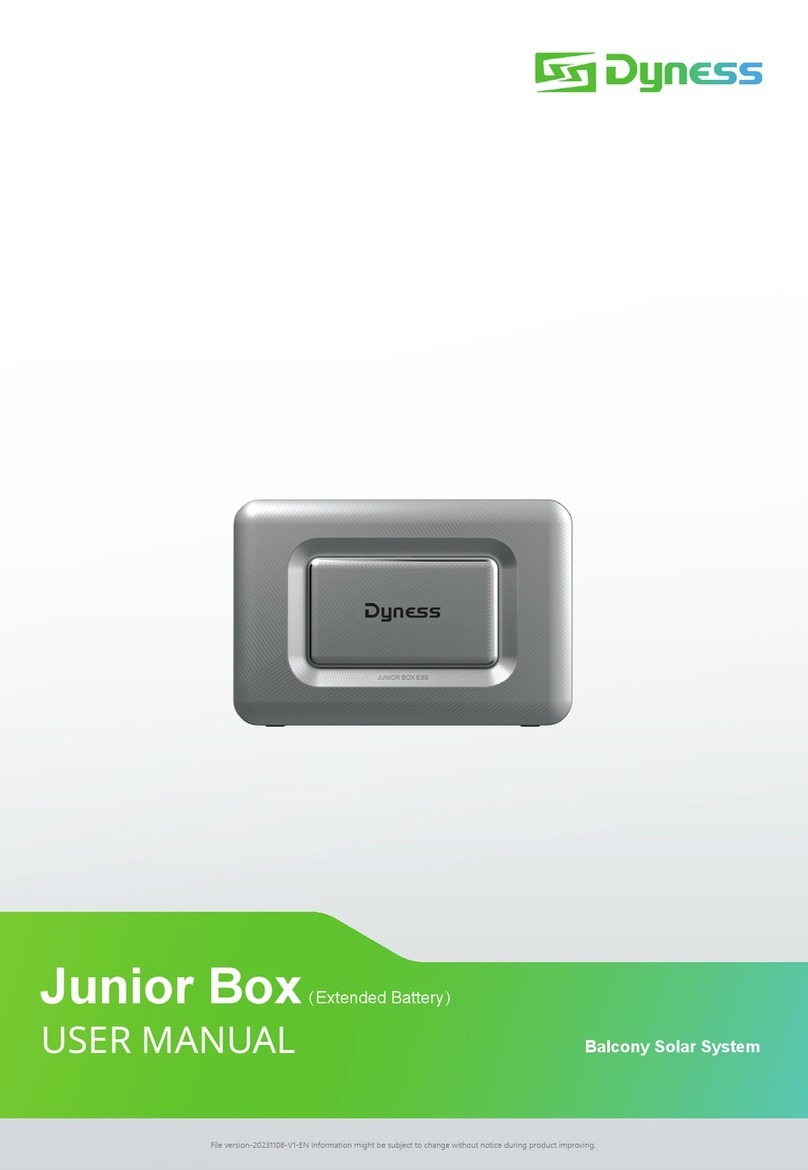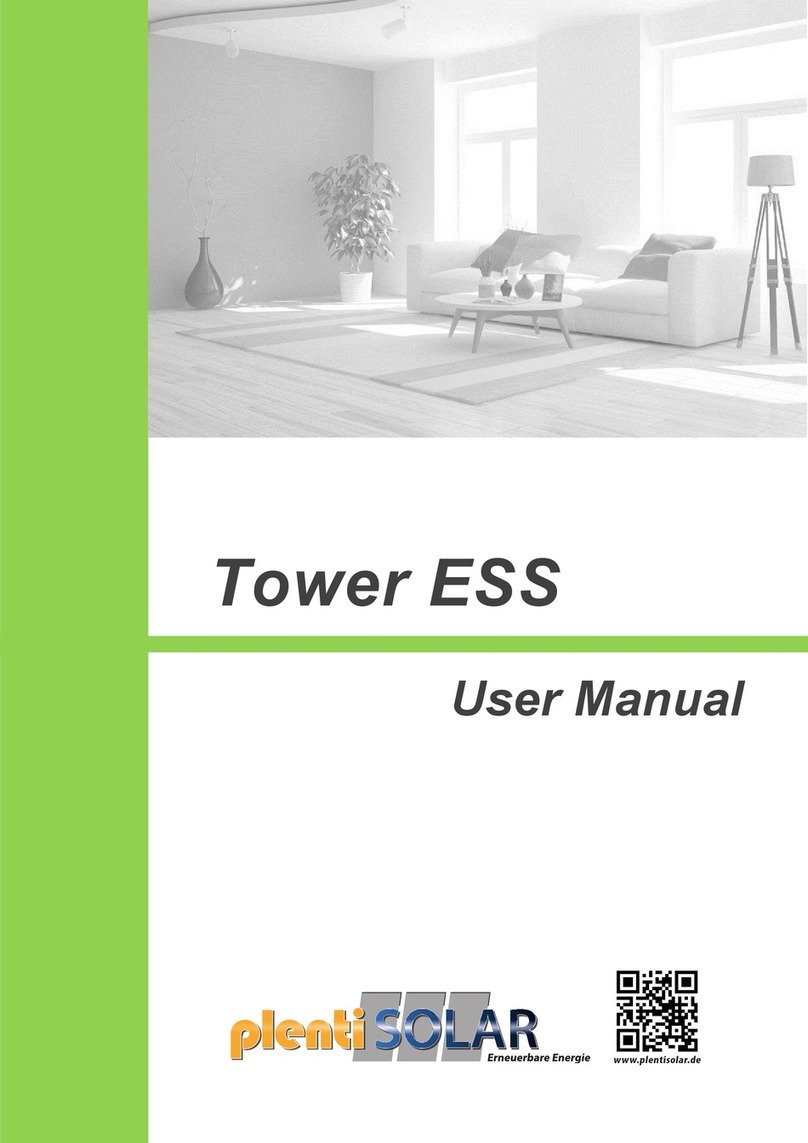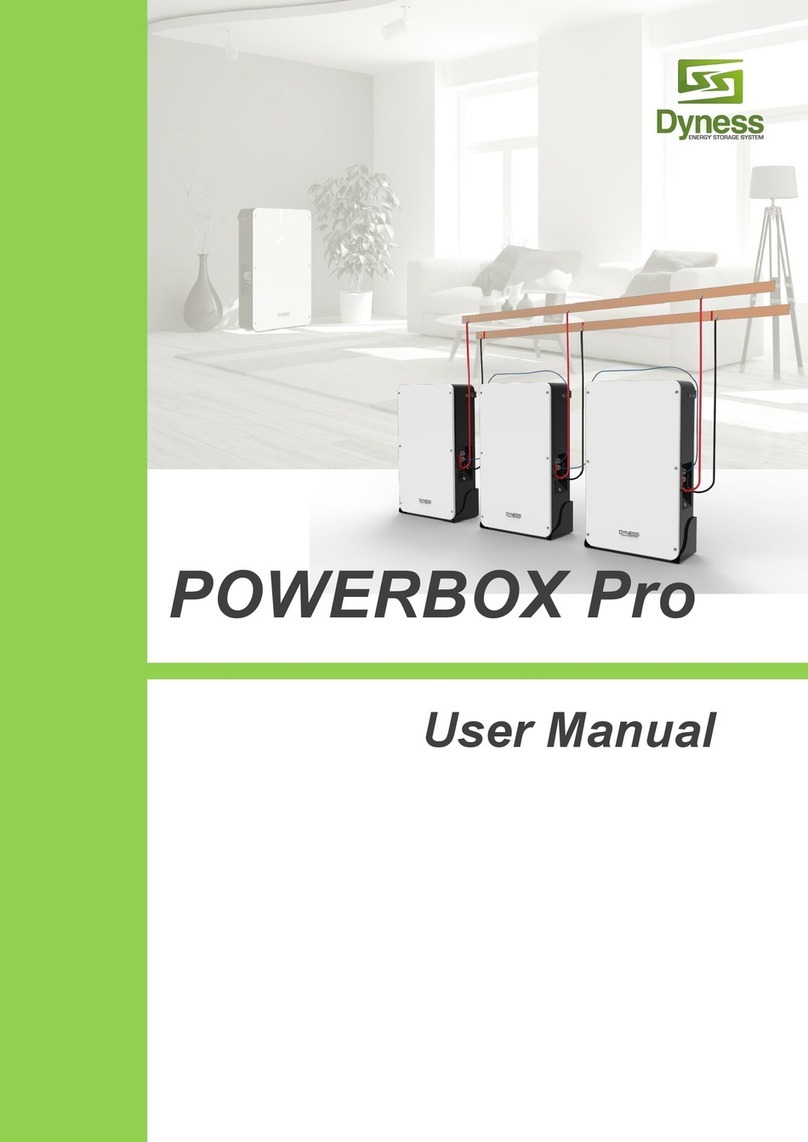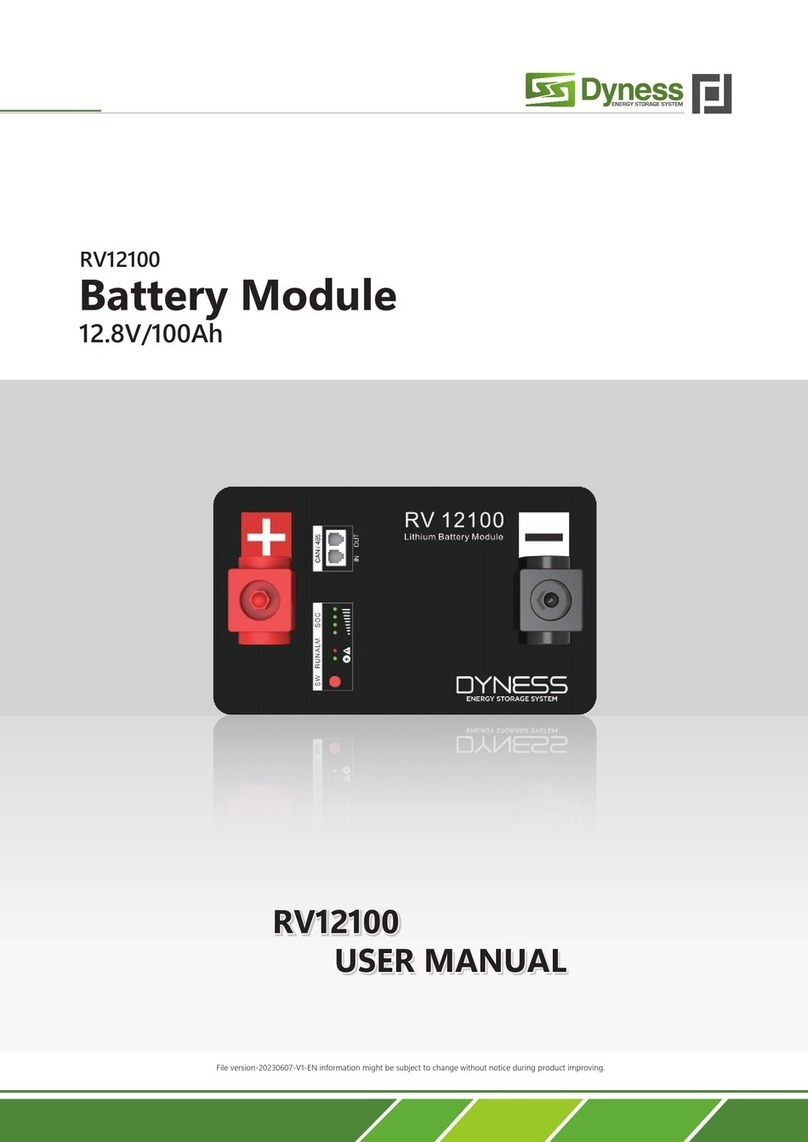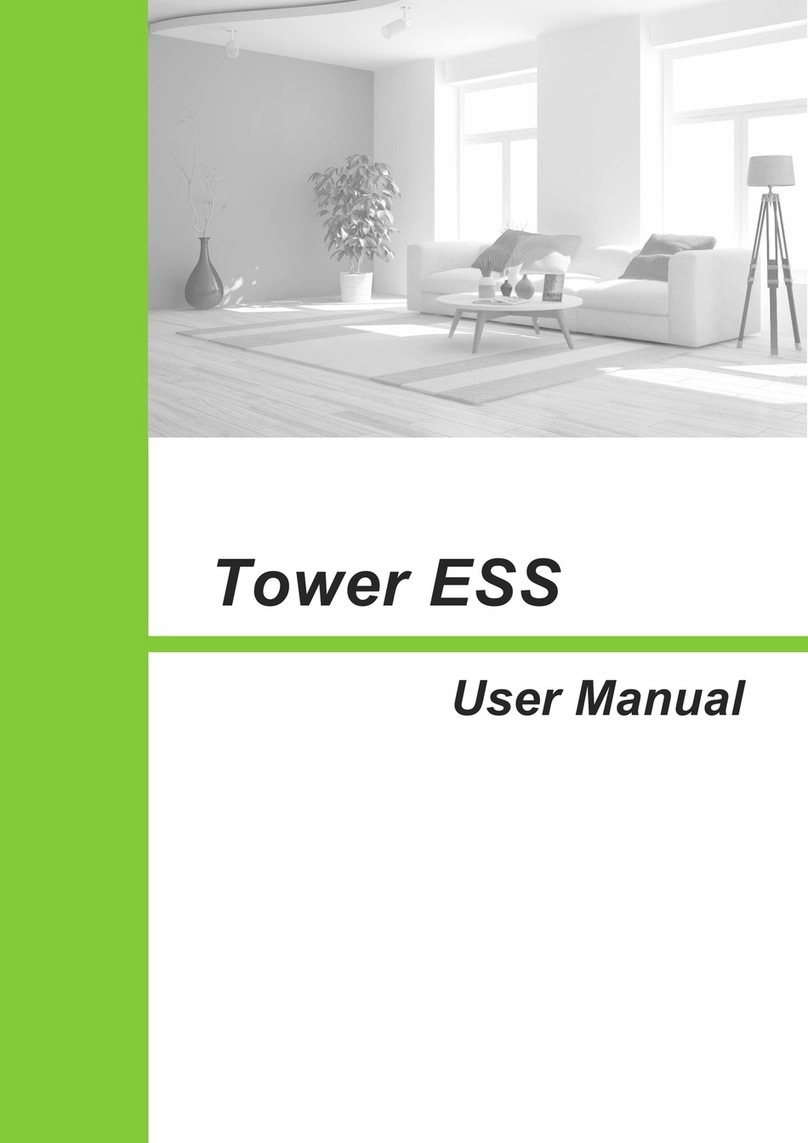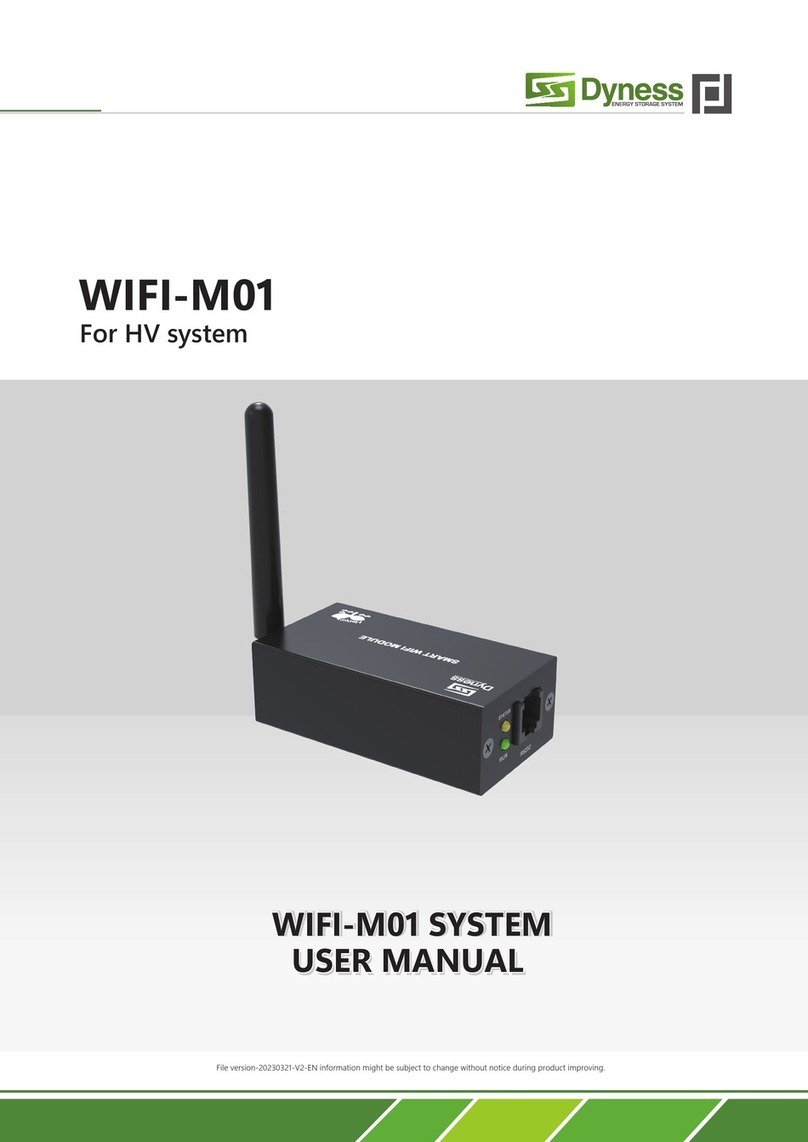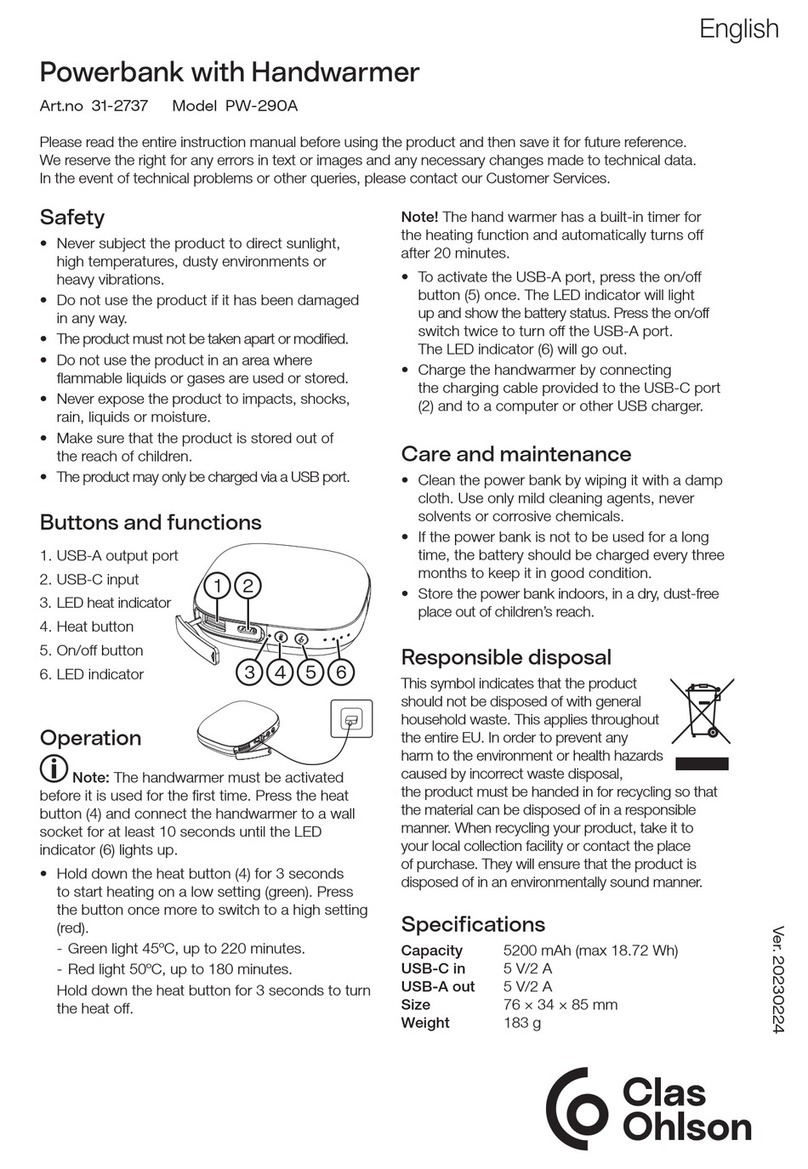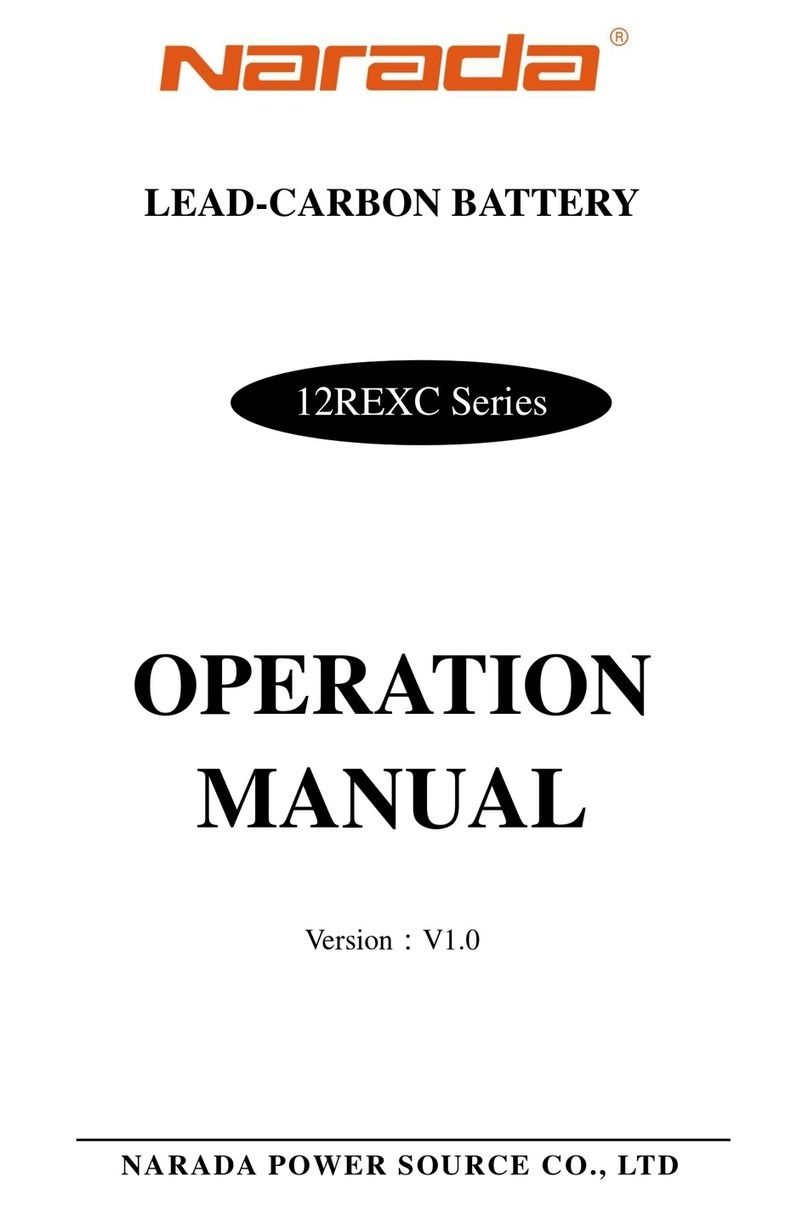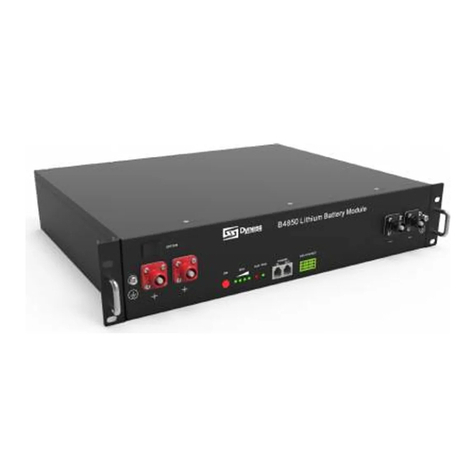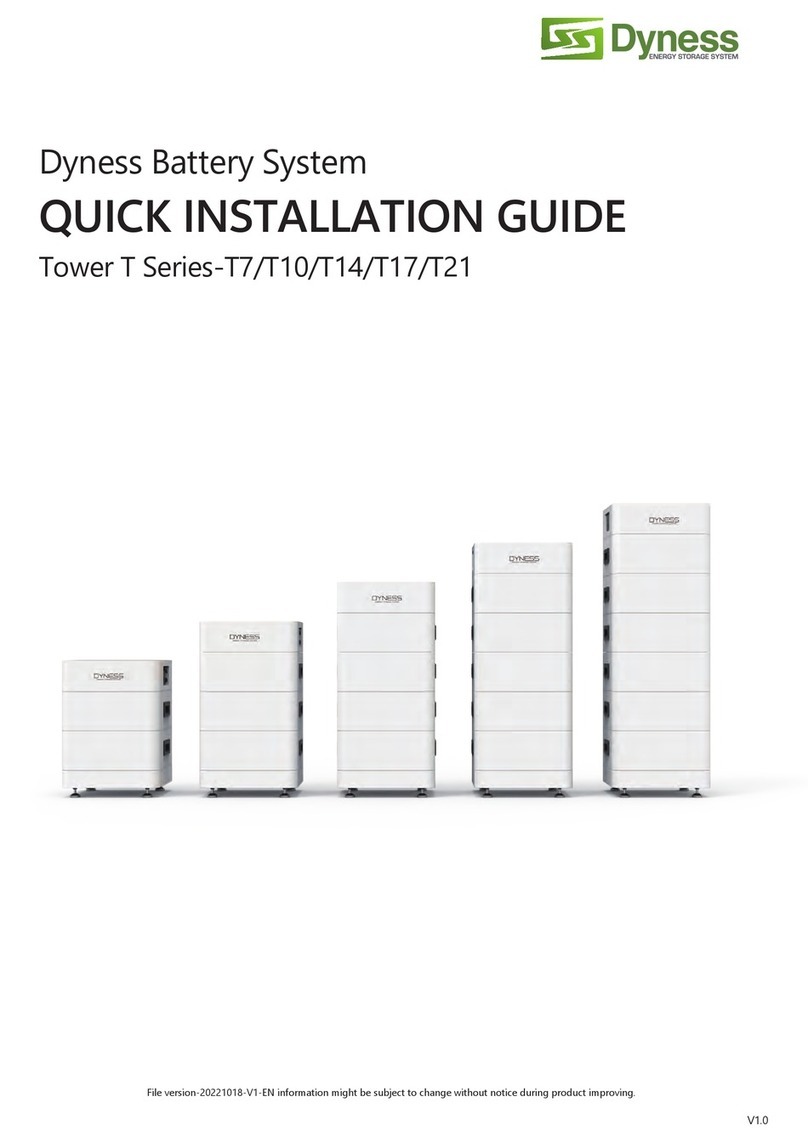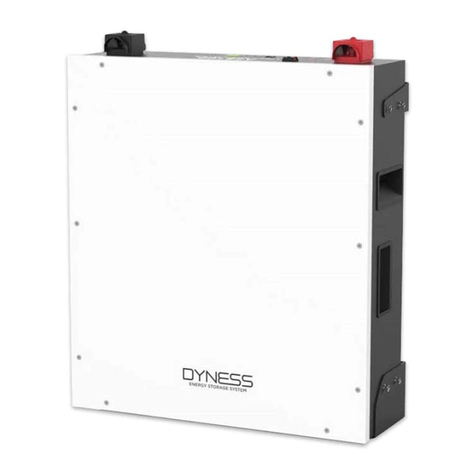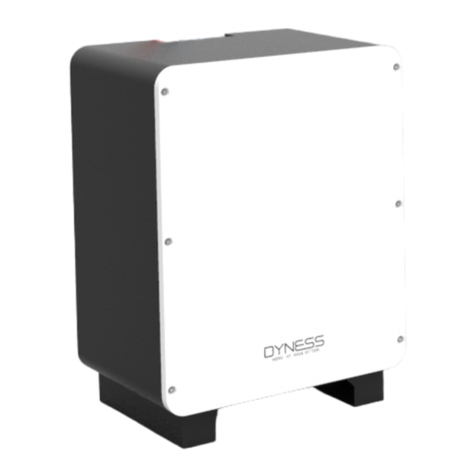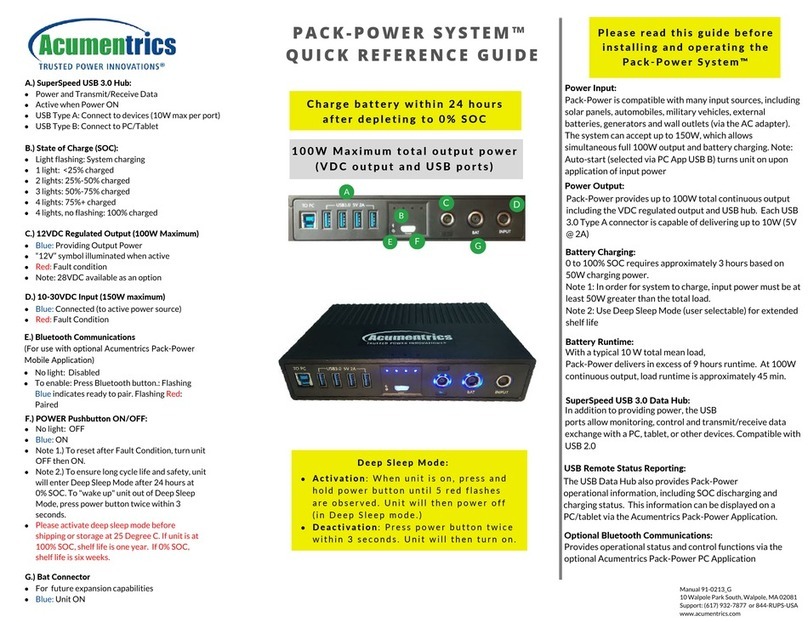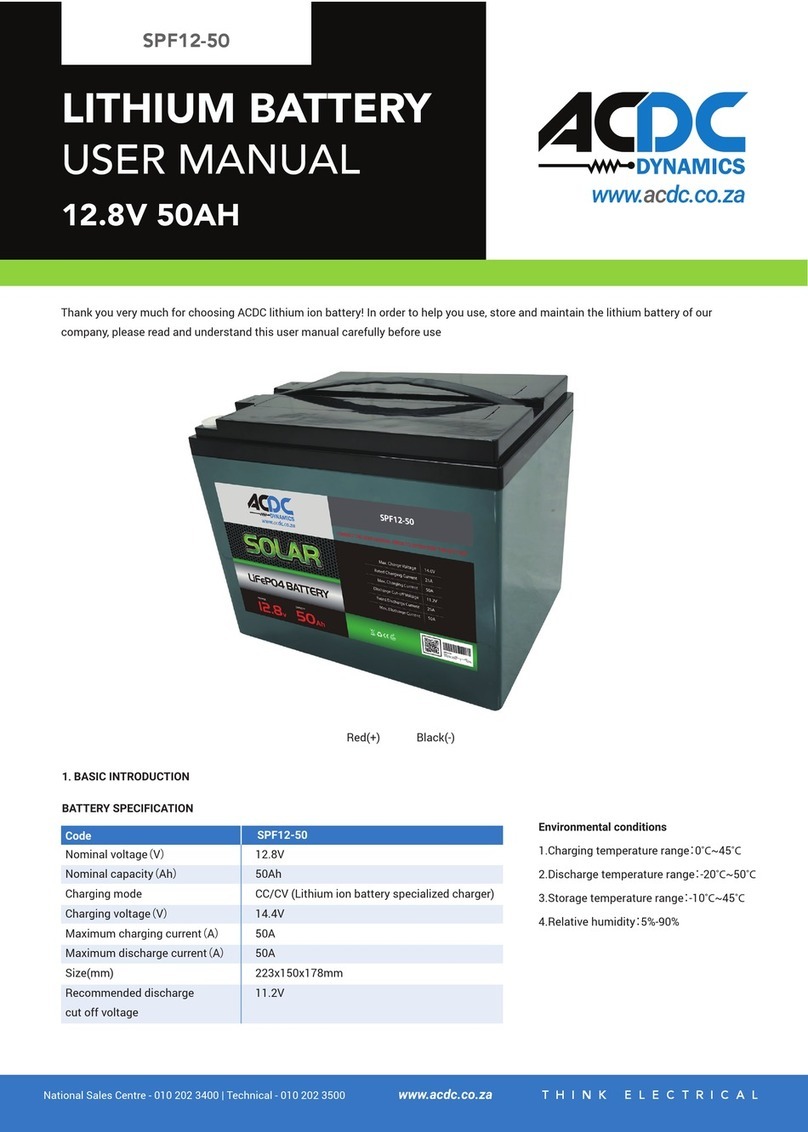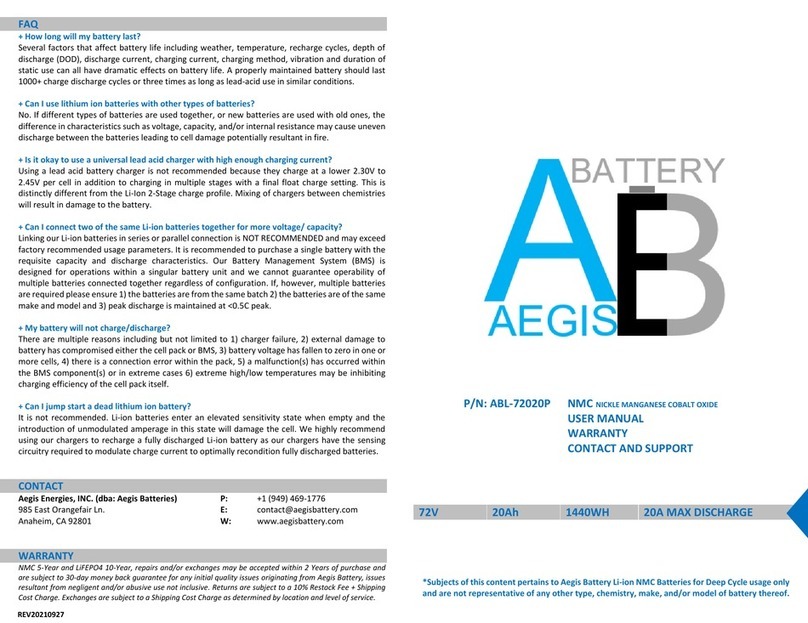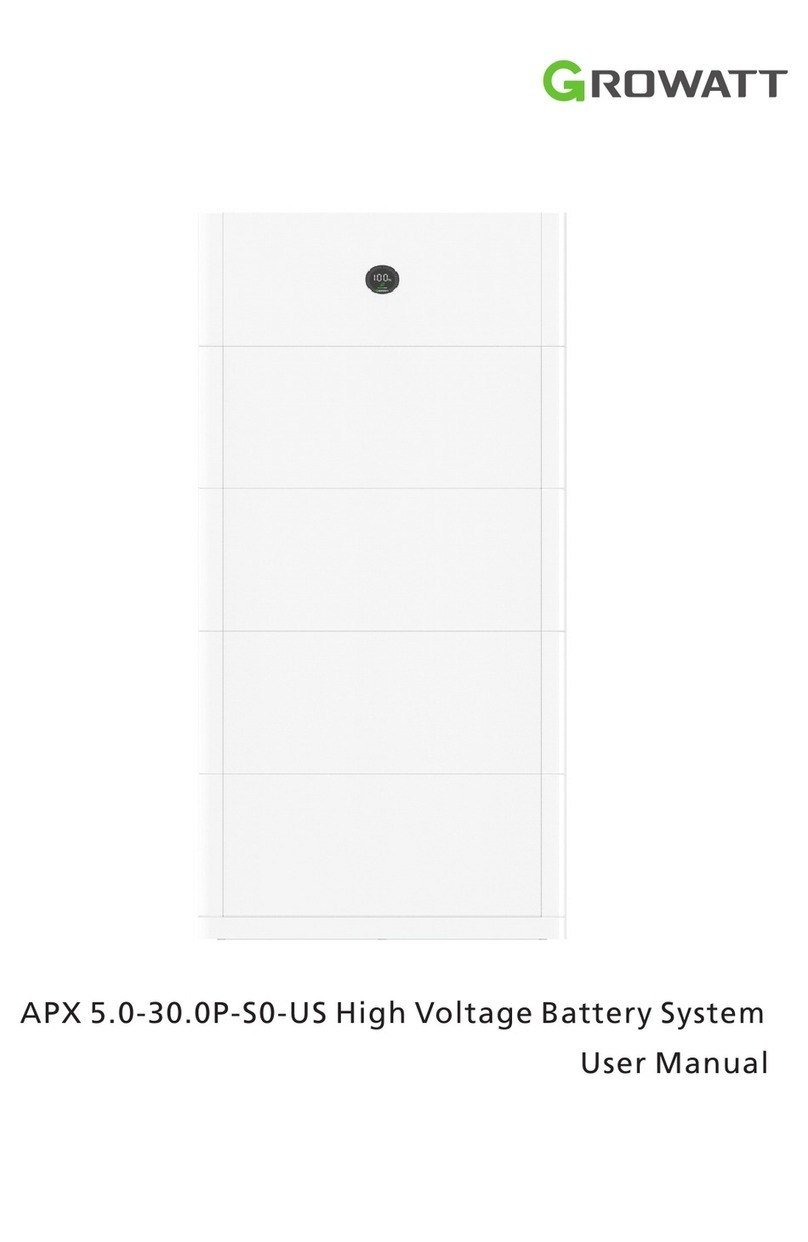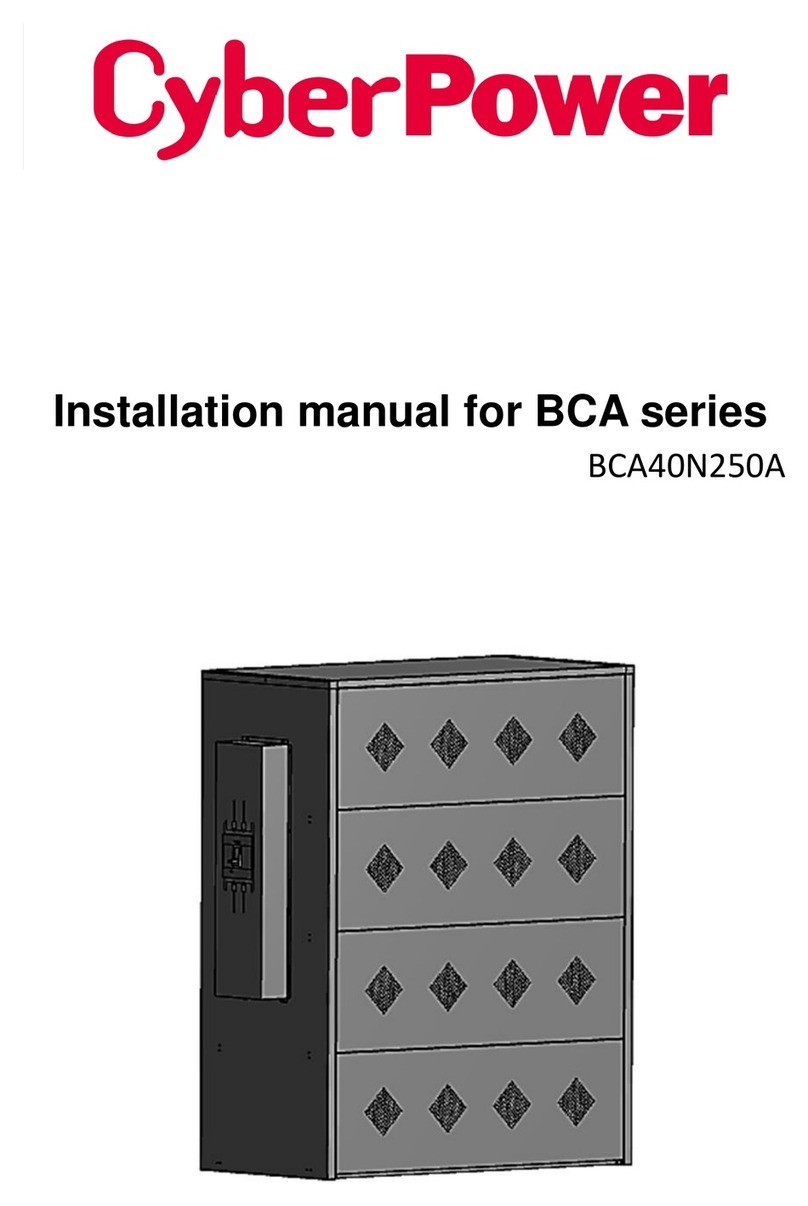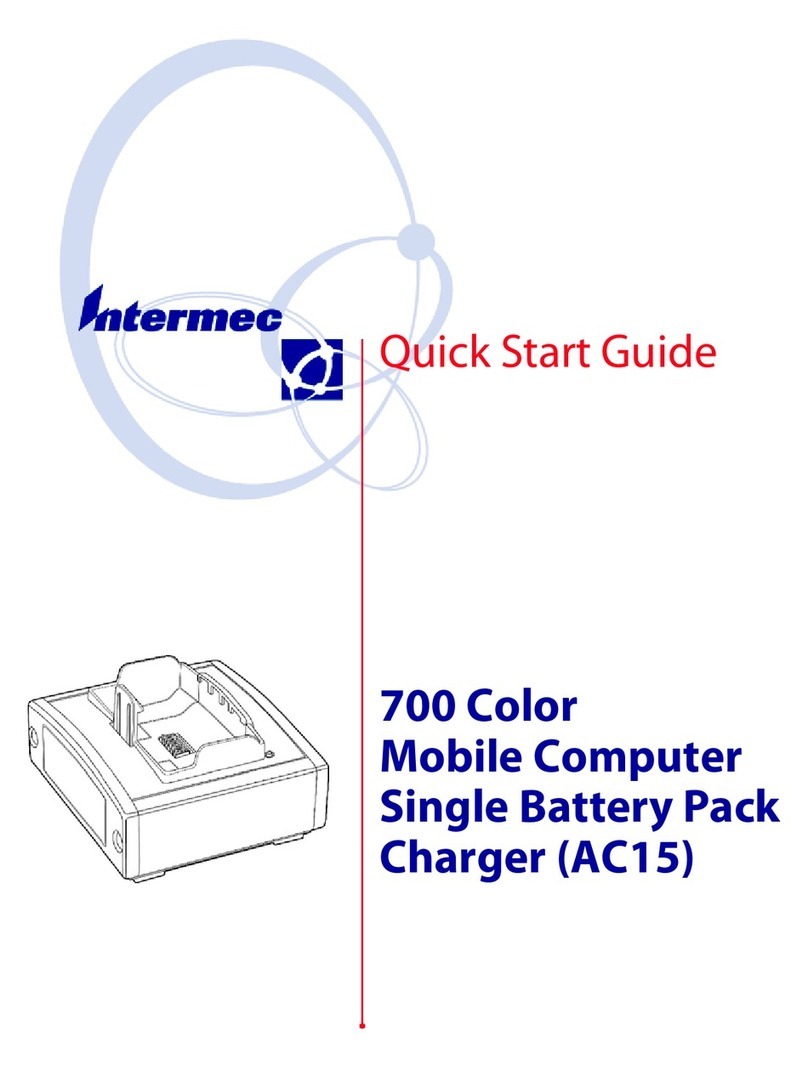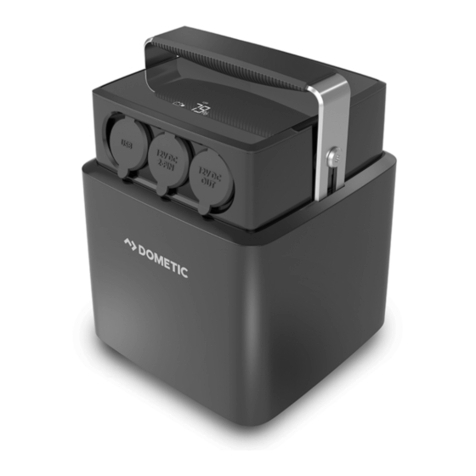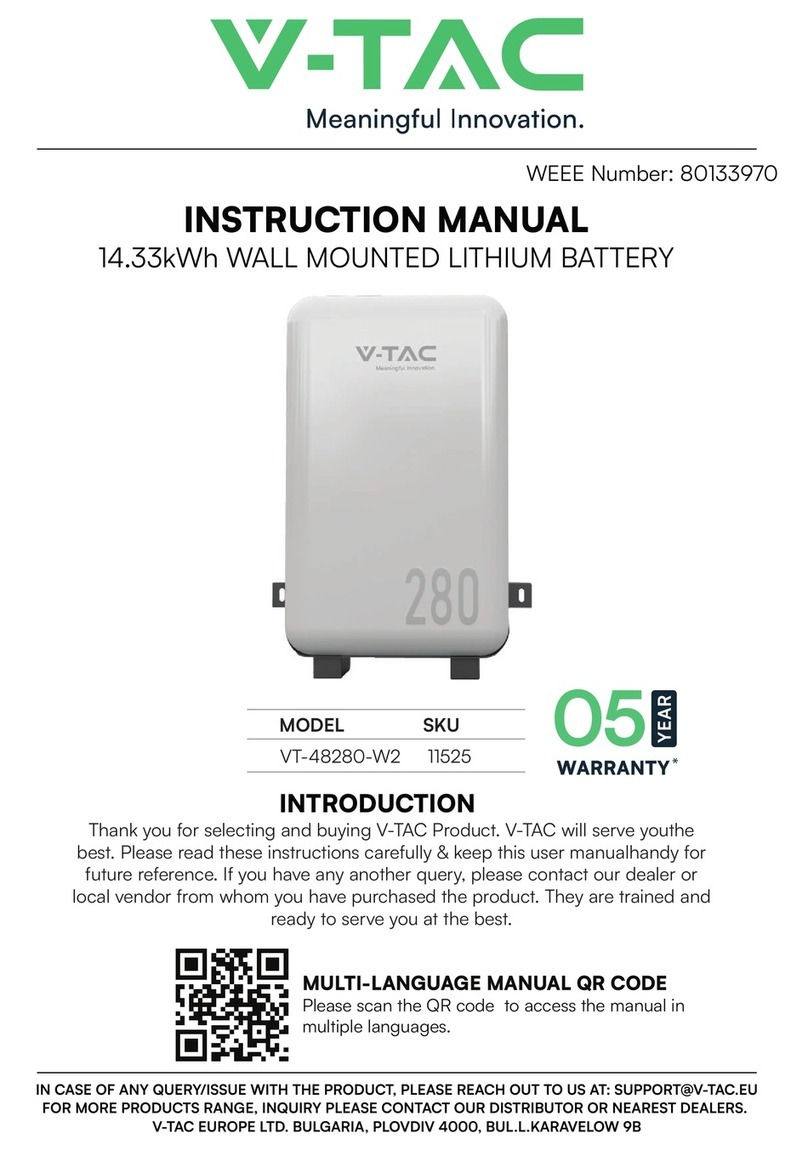
DL5.0C User Manual
©Dyness reserves the copyright of this document
1 Introduction
Brief Introduction
DL5.0C lithium iron phosphate battery system is a standard battery system unit,
customers can choose a certain number of DL5.0C according to their needs, by
connecting parallel to form a larger capacity battery pack, to meet the user's long-term
power supply needs. The product is especially suitable for energy storage applications
with high operating temperatures, limited installation space, long power backup time and
long service life.
Product Properties
DL5.0C energy storage product’s positive electrode materials are lithium iron phosphate,
battery cells are managed effectively by BMS with better performance, the system’s
features as below:
Comply with European ROHS, Certified SGS, employ non-toxic, non-pollution
environment-friendly battery.
Anode materials are lithium iron phosphate (LiFePO4), safer with longer life span.
Carries battery management system with better performance, possesses protection
function like over-discharge, over-charge, over-current, abnormal temperature.
Self-management on charging and discharging, Single core balancing function.
Intelligent design configures integrated inspection module.
Flexible configurations allow parallel of multi battery for longer standby time.
Self-ventilation with lower system noise.
Less battery self-discharge, then recharging period can be up to 10 months during the
storage.
No memory effect so that battery can be charged and discharged shallowly.
With wide range of temperature for working environment, -20oC~ +55oC, circulation
span and discharging performance are well under high temperature.
Less volume, lighter weight.

